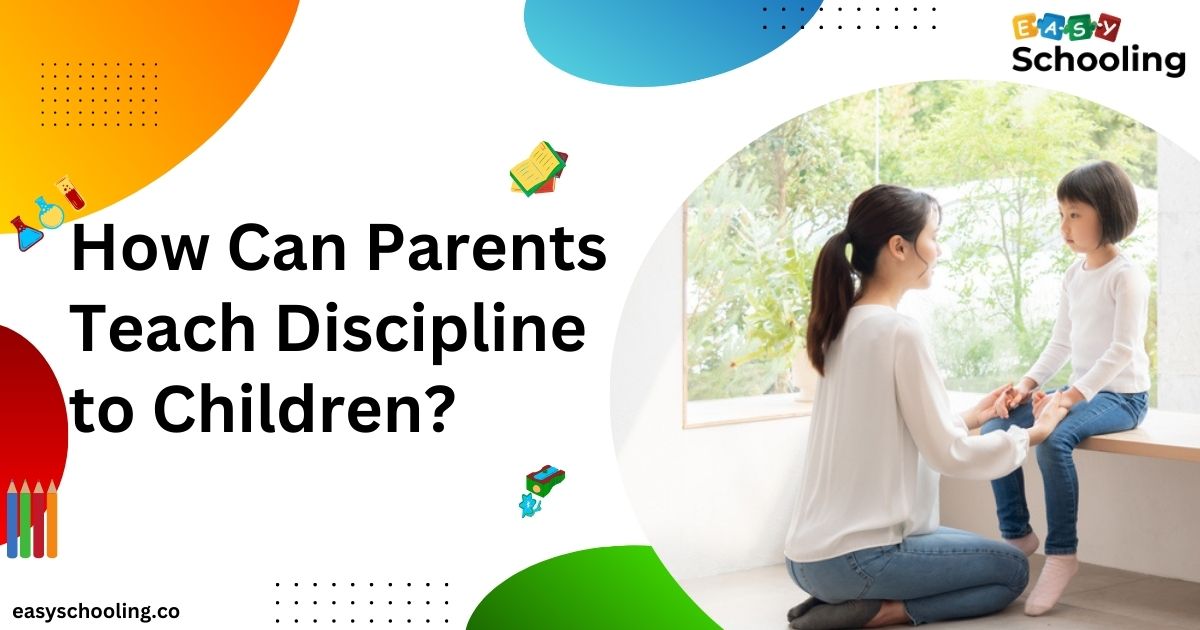Discipline stands as a fundamental pillar in parenting, shaping children’s character, behaviors, and overall development. As parents, our guidance significantly influences how our children perceive and respond to rules, boundaries, and expectations. Teaching discipline isn’t about punishment; rather, it’s a holistic approach encompassing consistency, communication, and positive reinforcement.
Setting Clear Expectations in Teaching Children Discipline
The cornerstone of effective discipline lies in setting clear expectations. Communicate rules and boundaries clearly, ensuring they are age-appropriate and understandable. Use simple language and examples to illustrate the desired behavior. For instance, instead of merely saying “behave,” specify the behavior you expect, such as “using gentle hands” or “sharing toys.”
Consistency: The Key Factor
Consistency is paramount in teaching discipline. Stick to established rules and consequences. Children learn through repetition and consistency; hence, wavering in our approach confuses them. Ensure all caregivers are on the same page to maintain consistency across different environments.
Positive Reinforcement and Encouragement
Acknowledge and appreciate positive behavior. Celebrate achievements and efforts, reinforcing desired conduct. Praise and encouragement serve as powerful tools in teaching discipline. For instance, saying “I’m proud of how you tidied up your room” positively reinforces the act of cleaning up after oneself.
Leading by Example
Children observe and emulate parental behavior. Setting a positive example by demonstrating patience, empathy, and adherence to rules fosters a conducive environment for learning discipline. Our actions speak louder than words; thus, showcasing desired behaviors cultivates a nurturing atmosphere.
Open Communication and Empathy
Maintain an open line of communication with your child. Encourage them to express their thoughts and emotions freely. Validate their feelings and provide constructive guidance. Empathy plays a crucial role in understanding their perspective, allowing for effective problem-solving and mutual respect.
Teaching Responsibility and Consequences
Teaching a sense of responsibility by allowing children to face consequences for their actions. Help them understand the outcomes of their choices. This approach encourages accountability and critical thinking, fostering self-discipline.
Creating a Structured Routine
Structure and routine provide a sense of security and predictability for children. Establish consistent meal times, bedtime routines, and designated study/play times. A structured routine minimizes chaos and helps children understand the importance of adhering to schedules.
Utilizing Effective Discipline Strategies
Various discipline strategies cater to different situations and age groups. Time-outs, logical consequences, and positive discipline techniques offer valuable tools in guiding behavior effectively. Tailor the approach based on the child’s temperament and the situation at hand.
Fostering a Supportive Environment
Nurturing a supportive environment encourages children to thrive. Engage in activities that promote teamwork, problem-solving, and emotional intelligence. Encourage healthy competition, cooperation, and collaboration to foster discipline and social skills.
Encouraging Self-Regulation
Teaching children discipline and self-regulation empowers them to manage their emotions and behavior. Encourage mindfulness techniques, such as deep breathing or counting to ten, to help them regulate emotions during challenging situations. By fostering self-awareness, children gain valuable skills in controlling impulses and making thoughtful decisions.
Implementing a Reward System
Introduce a reward system to incentivize positive behavior. Utilize a sticker chart, token economy, or a points-based system where children earn rewards for meeting behavioral expectations. Rewards can vary from extra playtime, a special outing, or small privileges, reinforcing good conduct.
Handling Discipline Challenges
Addressing challenging behaviors requires a tailored approach. Identify the root cause of the behavior and address it accordingly. For instance, if a child acts out due to tiredness or hunger, addressing these underlying factors may alleviate the behavior. Employing empathy and problem-solving helps in finding constructive solutions.
Adapting Strategies to Different Age Groups
Strategies of Teaching discipline need to align with the child’s developmental stage. Younger children might respond better to visual cues and shorter time-outs, while older children may benefit from discussions and logical consequences. Tailoring strategies based on age ensures their effectiveness and promotes understanding.
Staying Calm and Patient
Maintaining composure during disciplinary moments is crucial. It’s natural for parents to feel frustrated, but responding calmly helps in resolving conflicts effectively. Take a moment to breathe and address the situation rationally rather than reacting impulsively, setting a positive example for children to follow.
Reinforcing Consistent Parenting
Consistency among parents is imperative. Whether it’s parents, grandparents, or caregivers, maintaining consistency in disciplinary approaches across different settings fosters stability and understanding for the child. Harmonizing strategies ensures a unified and clear message for the child.
See More: English Apps for Teachers: Enhancing Educational Practices
Encouraging Problem-Solving Skills
Empower children by involving them in the problem-solving process. Encourage them to brainstorm solutions to conflicts or misbehaviors. This approach not only promotes critical thinking but also teaching discipline and a sense of responsibility for their actions.
Seeking Professional Guidance
In complex situations or if facing persistent behavioral issues, seeking guidance from child psychologists, counselors, or parenting experts can provide valuable insights and tailored strategies to address specific challenges.
Emphasizing Unconditional Love and Support
Amidst enforcing discipline, it’s crucial to emphasize unconditional love and support. Children thrive in an environment where they feel loved and accepted. Even during teaching discipline, reassure them of your unwavering love and support.
Conclusion
In conclusion, teaching discipline to children requires a multifaceted approach encompassing consistency, positive reinforcement, communication, and leading by example. Embracing these strategies not only helps in teaching discipline but also contributes to fostering a nurturing and supportive environment for children’s overall growth and development. At EasySchooling, we underscore the solutions of teaching children discipline that encourages and facilitates robust parental engagement.
